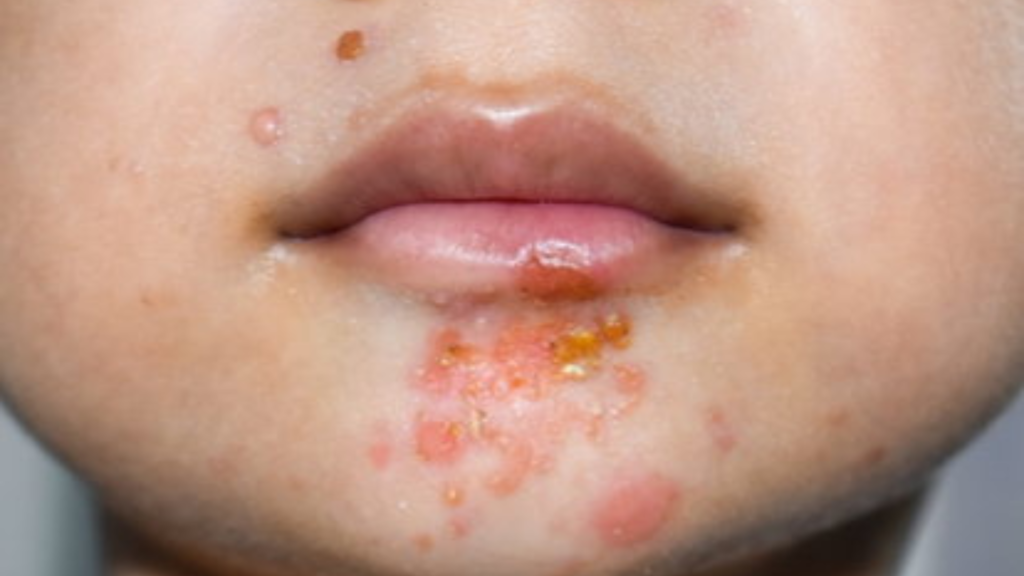
What are School Sores (Impetigo)?
School Sores are Frustrating, But Treatable!
While the name might remind you of playground shenanigans, this common skin condition is no laughing matter. But fear not, here are my top tips to beat this itchy and annoying ailment.
Who Gets Impetigo:
Impetigo doesn't discriminate. It can strike people of all ages, from the smallest kiddos to the wisest grandparents. Kids, especially those in close quarters like classrooms, are more prone to catching it, hence the nickname "school sores." However, adults can also fall victim to this unwelcome visitor.
What It Looks Like:
Impetigo often starts as small red bumps that quickly turn into blisters. Picture miniature volcanoes of discomfort popping up on your skin. These blisters then burst, leaving behind honey-coloured crusts. Don't let the sweet name fool you; these crusts are anything but appetizing. In fact, they can be quite itchy and uncomfortable. It's like having a tiny, annoying companion constantly whispering, "Scratch me!" in your ear.
How It Spreads:
Impetigo is a master of disguise and can spread faster than Taylor Swift concert tickets sell. It loves making new friends and gains entry through cuts, scrapes, or even insect bites. If you scratch an existing impetigo sore, it’s likely to spread too. Sharing towels, bedding, or personal items can also be a sneaky way for impetigo to hitch a ride and spread to others. So, remember, sharing is caring, but not when it comes to school sores!
Treatment:
Alright, let's talk about how we can kick impetigo's butt and make sure our kids are back to their mischievous selves in no time. Thankfully, simple treatment options for children are available, and a healthcare provider can guide you through the process.
Impetigo is a bacterial skin infection, so it’s no surprise that topical antibiotic creams are often the superhero. Remember, though, to follow your healthcare provider's instructions on how and when to apply the cream. They may also advise gently removing the scabs to allow the medication to work more effectively. Just make sure to get guidance from the experts to ensure a safe and painless scab removal process. If the antibiotic cream isn’t helping, the next step is usually oral antibiotics especially if the infection is spreading.
But wait, there's more! Scratching is a big no-no. We know it's tough to resist that itch but encourage your little one to refrain from scratching. You can cover the area and you can distract them with fun activities or even engage them in a game of "Who can resist the scratch the longest?" Remember, scratching can not only spread the infection but also slow down the healing process.
Now, here's a fun twist: Some healthcare providers may also recommend bleach baths for your child. Don't worry; we're not suggesting you turn your bathroom into a chemistry lab. A diluted bleach solution added to the bathwater can help eliminate bacteria on the skin. But, of course, only do this under the guidance of your healthcare provider. Safety first, superhero parents!
Prevention is always better than cure and especially when it comes to this highly contagious condition. Teach children the importance of handwashing, cleanliness is your armor against impetigo. Also avoid sharing personal items like towels, clothes, or even toys with other kids. Let's keep those germs at bay.
The bottom line:
Impetigo, the notorious school sores, may be a tough opponent, but with antibiotics, controlled scratching, supervised bleach baths, and expert advice, we can win this battle! Remember, if you suspect your child has impetigo, seek medical advice for the best treatment options. Together, we can kick these itchy school sores to the curb and get back to enjoying life's more pleasant moments, itch-free!
References:
- American Academy of Dermatology Association. (2021). Impetigo. Retrieved from https://www.aad.org/public/diseases/a-z/impetigo
- Mayo Clinic. (2021). Impetigo. Retrieved from https://www.mayoclinic.org/diseases-conditions/impetigo/symptoms-causes/syc-20352352
